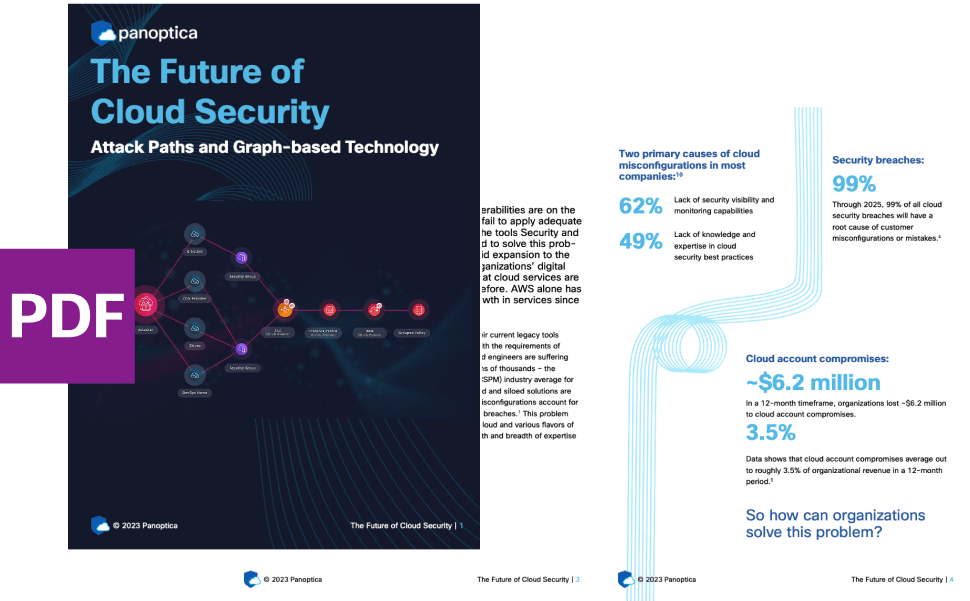INSIGHTS
8 min read

Published on 01/23/2022
Last updated on 04/22/2024
Introduction to synthetic monitoring
Share
Software applications have become key drivers for realizing growth and profitability in the modern business world. That's why application performance has become more significant to business stakeholders and IT teams have shifted focus to ensuring applications can continuously meet consumer expectations. In this post, we outline why this has led to the need for the active monitoring technique known as Synthetic Monitoring—and explain what it can do for you.
Synthetic monitoring: An overview
Application Performance Monitoring (APM) outlines a set of tools and practices to identify bugs and vulnerabilities, enhance user experience, and ensure the computing environment meets agreed-upon performance standards.
Synthetic Monitoring (SM) is an active monitoring technique that follows an APM methodology to simulate the paths users take when accessing an application. IT teams use this technique to gain insights into application uptime, common user access patterns, and the performance of transactions in the application. Let's explore the basics of synthetic monitoring and its significance for modern software teams.
Synthetic monitoring: What it is and how it works
Organizations use Synthetic Monitoring to determine an application’s availability, response speed, transaction performance, cost-effectiveness, and points of failure. SM relies on machines or checkpoints that interact with the application through a common network entity. These machines issue simulated instructions to the application just as a normal user would. The instructions are contained in scripts sent periodically to provide a consistent stream of availability and performance information.
Synthetic Monitoring scripts are sent from machines located close to the users to gain an accurate insight into the application's performance. Teams often deploy checkpoints on multiple servers in different locations to better gauge the application’s global responsiveness and availability. The typical workflow for synthetic monitoring is as follows:
The APM system chooses a checkpoint to perform the simulated access function and sends the script to the selected checkpoint.
The checkpoint then tries to contact the target application, checks for the response, sends the instructions, and proceeds, depending on the check required by the APM system.
- The checkpoint returns the results of its check to the APM system.
- If the check passes, APM records the information in a report.
If the application fails the check, the APM sends a new test through another checkpoint; if this new check fails, the APM system confirms an error.
The APM then alerts teams to the confirmed error for escalation or attempts a fix if this is set up in the duty schedules and escalation settings.
Types of synthetic monitoring
While there exists a myriad of monitors that simulate user behavior, Synthetic Monitoring mainly covers three areas: web performance, availability, and transactions.
Web performance monitoring
Web performance monitoring checks for the availability and performance of web servers and applications. IT teams can use web performance monitoring to identify issues with page-loading speed, frontend and backend response times, and the performance of all application components. Some of the issues teams can detect using Web Performance Monitoring include:
- Slow responses from a Content Distribution Network (CDN)
- Content errors
- Delays caused by third-party integrations
- Slow databases
Availability monitoring
This is the basic form of monitoring used to establish an application’s uptime and to check that its functions are working as expected. Some synthetic monitoring tools come with advanced availability monitors that can check for specific performance information such as:
- Content verification
- Authentication attempts
- API calls
- DNS/SSL entry verification
Transaction monitoring
Transaction monitoring techniques are used to examine the user experience through specific paths in an application. This takes synthetic monitoring to a higher level by simulating specific patterns that follow a certain task to completion. Transaction monitoring can be used to examine a login service, form completion, product purchase, or how users respond to system prompts.
Synthetic monitoring vs. real user monitoring
While Synthetic Monitoring relies on simulated actions to gauge the performance of an application, Real User Monitoring (RUM) involves the tracking of a user experience. RUM is achieved by injecting code into a web page so it collects information on user interactions in the background. There are, therefore, a few fundamental differences between the two monitoring techniques, including:
- RUM requires a user action to initiate a test, while SM occurs automatically within set intervals.
RUM uses packet and data-capture mechanisms to collect traffic information, while SM uses scripted actions and application responses.
RUM is used to identify historical trends, while SM is mostly used to identify short-term application issues that need immediate remediation.
Implementing synthetic monitoring for application observability
Synthetic Monitoring uses robot-monitoring clients on checkpoint machines to report on predefined business transactions and system availability. With proper synthetic monitoring, software teams can easily and quickly identify the root causes of performance issues for rapid resolution. This section explores the use cases of synthetic monitoring and top tools to integrate it into your application development and performance management.
Synthetic monitoring use cases
If you implement it effectively, Synthetic Monitoring allows software teams to experience the application from a user’s perspective. Teams can view the performance of their applications and integrations before committing them to production and see whether users will have a fulfilling experience. Below, we discuss some of the top use cases for Synthetic Monitoring in application development today.
Website benchmarking
With Synthetic Monitoring, developers and administrators can deploy checkpoints to monitor applications at flexible locations and intervals. They can then use the SM data to establish a performance baseline and develop improvement strategies after identifying underperforming areas.
Testing an application’s scaling capabilities
Scaling an application across a larger deployment environment may pose challenges to software teams. Synthetic Monitoring enables teams to test their products in new regions. They can simply deploy different checkpoints to evaluate the response speeds from a user’s viewpoint and make improvements as needed for a better user experience.
Monitoring third-party integrations
Most websites today must include numerous third-party plugins, which makes it difficult to pinpoint the root cause of an issue. By evaluating transactions with these tools using Synthetic Monitoring, APM tools can identify the exact point of failure and alert administrators.
Ensuring compliance with regulations and SLAs
Service Level Agreements are important to modern business, as organizations use them for accountability in service delivery. With information from SM systems, application developers can set achievable Service Level Objectives and agree on metrics for successful performance.
Popular synthetic monitoring solutions
The top tools to enable Synthetic Monitoring for Business Service Management include the following:
Epsagon
Epsagon, acquired by Cisco in 2021, is a cloud-native monitoring and automation platform that enables explicit observability of the topology of requests flowing through applications. Epsagon is microservice-based, lightweight, and integrates seamlessly with cloud-native services for end-to-end performance management of modern architectures. By automatically discovering application stacks, Espagon provides visibility into the performance measures of any production environment without needing manual configuration.
Besides this, the platform uses automatic tracing libraries to collect each application-level call without manual code changes, logs, configurations, or sidecars. Epsagon allows administrators to set up notifications for failure alerts based on pre-selected categories and share them via one of various communication channels. The platform also includes an Issue Manager interface that aggregates and correlates data from various SM tools for easier and faster management of alerts. Leveraging a Trace Search mechanism, Espagon allows efficient querying and searching of API calls as well. Epsagon can additionally connect with multiple data sources and lets you create custom dashboards for simplified performance monitoring.
AppDynamics
AppDynamics synthetic monitoring enables users to monitor business transactions and performance from the browser to the back-end.
Sematext
Sematext includes Sematext Synthetics, a Synthetic Monitoring tool that facilitates the delivery of fast, reliable, and consistent websites.
Dynatrace
A cloud-native intelligent and automated observability platform, Dynatrace leverages artificial intelligence to simplify cloud monitoring and automation.
Datadog Synthetic Monitor
Datadog’s synthetic monitor enables the creation of code-free tests to monitor key network endpoints, detect user-facing issues, and jumpstart system-wide investigations into performance and user-experience issues.
SolarWinds
SolarWinds’ Synthetic End User Monitor, uses a simple recorder for monitoring a wide range of applications and transactions, including SaaS, web transactions, CRM platforms, etc.
Benefits of synthetic monitoring
Synthetic monitoring lets organizations understand detrimental steps in transaction processes and application performance to optimize their online strategies. Some benefits of adopting Synthetic Monitoring include:
- Proactive visibility into the health and performance of applications by simulating user traffic
- Support for enhanced agility, quicker problem resolution, and rapid application delivery
Easy monitoring of large, complex, modular applications by emulating user transactions and processes
- Quicker resolution of performance problems through automated alerts
- Ability to judge global user experiences by deploying checkpoints in multiple regions
Using synthetic monitoring to enhance your team’s tracking abilities
Synthetic Monitoring enables software teams to identify short-term issues with performance that can impact the user experience. SM is typically performed without user input within the production environment for insights into how the application responds to user requests. Epsagon simplifies Synthetic Monitoring through automated tracing, instant alerts, and trace search capabilities.
If you want to learn more, we recommend checking out our piece on observability in security.


Get emerging insights on emerging technology straight to your inbox.
Unlocking Multi-Cloud Security: Panoptica's Graph-Based Approach
Discover why security teams rely on Panoptica's graph-based technology to navigate and prioritize risks across multi-cloud landscapes, enhancing accuracy and resilience in safeguarding diverse ecosystems.

Related articles

The Shift keeps you at the forefront of cloud native modern applications, application security, generative AI, quantum computing, and other groundbreaking innovations that are shaping the future of technology.





